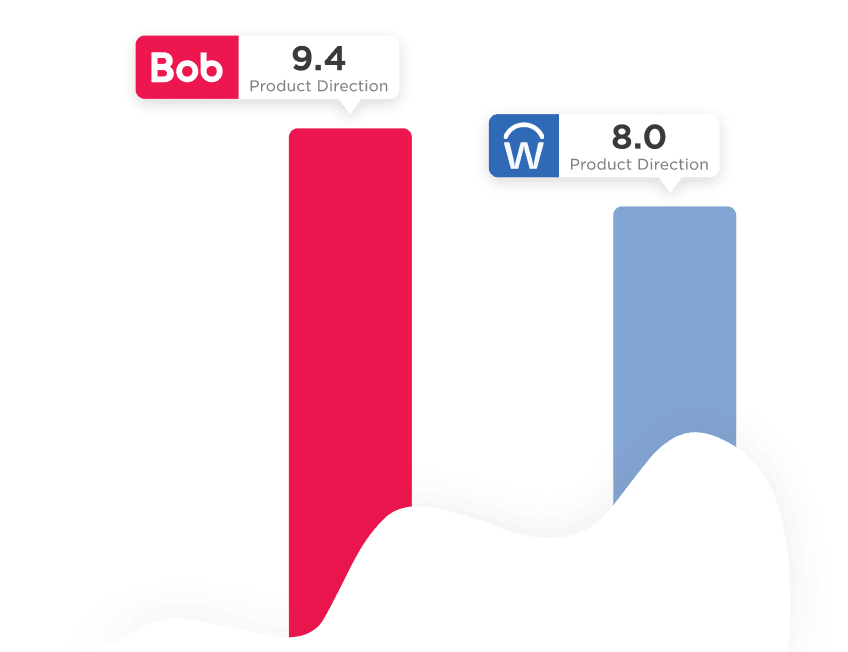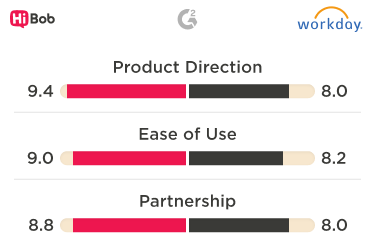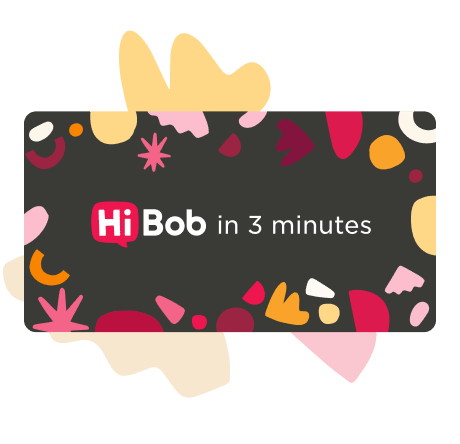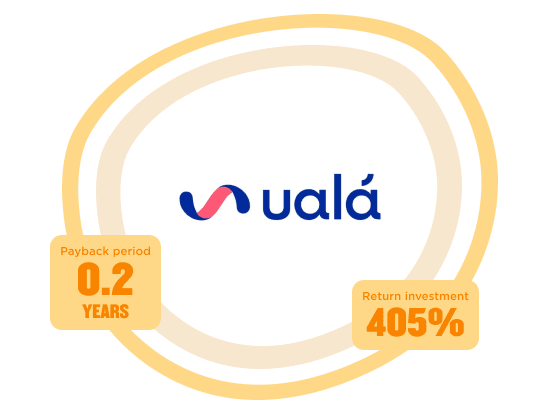HiBob vs Workday
See why thousands of companies choose HiBob over Workday to build the future of their people operations and create an engaged and inclusive culture.


See why thousands of companies choose HiBob over Workday to build the future of their people operations and create an engaged and inclusive culture.















Uala is a 1,400+ employee financial services company that implemented Bob in 2019. A 3-year retrospective study by Nucleus Research found that Uala achieved 405% ROI:














[Bob’s] remarkable automation capabilities not only lighten our workload but also pave the way for us to explore innovative avenues for nurturing our team's growth and fostering a dynamic and inclusive environment.
The user experience is unlike any other HR system I have used - it's easy to navigate and engaging for your business users, not just HR. The system is also constantly evolving with new features and functionality added monthly.
Our previous HR system was very limited, so we relied heavily on manual excel trackers and diary management. [T]he majority of tasks are now managed through automated flows and reports.
A million worlds ahead of previous systems we’ve used! Through its fantastic reporting functionality and analytics, it's massively helped to ensure our data is accurate at any given moment. It's provided us with more trust in our data.
HiBob has been a game-changer for me. It's straightforward to use and very intuitive. You don't need to learn how to use it. It also provides a sense of community for our global team, and the value of what you get relative to the tool's cost is exceptionally high.
HiBob is the only product I have found that can seamlessly handle w2 employees and overseas independent contractors. We can distribute and store documents, track OOO schedules, and include ICs in teambuilding and employee engagement.
Providing a competitive compensation package, including competitive salaries and benefits that your people want and need, is instrumental in attracting the best talent. And, once your new hires are onboarded and ramped up, you want them to stay with your company and not look elsewhere for other opportunities. That’s why it’s essential that you continuously revisit and review your compensation offering, ensuring that you are compensating your people fairly and staying competitive.
The best way to do this is by conducting a compensation and benefits review. Doing so will help you identify pay gaps and ensure your people are compensated according to their experience, skills, and performance. When done correctly, it eliminates scenarios of inequitable pay across your organization.
Compensation reviews and compliance with local transparency regulations are fundamental to building your compensation strategy, but it doesn’t stop there. You must also determine how transparent you want to be with your people around compensation. Once you set your compensation strategy, you can create a culture of pay equity that your people will value.
With that in mind, let’s look at how to start building a compensation strategy in Bob that will keep you compliant, ensure equitable pay, and help boost retention across your company.
Bob includes several features that support you as you build your compensation strategy and help you create a culture of pay transparency and equity for your people.
As your company grows in headcount and expands to multiple geos, it’s essential that you create a consistent structure for your positions, organizing them according to job function and level. Bob’s job catalog is included in Bob’s Core HR functionality and provides a clear understanding of leveling and responsibilities across your organization.
With Bob’s job catalog, you can see all of the job titles, job levels, the number of employees assigned to each job name, salaries, and job functions at a glance. Having this data at your fingertips helps you make decisions on your company’s current and future state—including areas for expansion and defining the salary range for each position—helping you stay compliant and ensure equitable pay for your current employees and new hires.
To attract and retain the best talent, you must offer competitive salaries and relevant benefits. Bob’s Compensation Benchmarking Powered by Mercer provides you with trusted, industry-leading benchmarking data directly within Bob. The global compensation data comes from 60+ countries and has been sliced and diced to include only relevant data for our customers regarding job sector and company size.
Compensation Benchmarking Powered by Mercer provides you with the data to price jobs with geo-specific pay ranges and stay competitive in every market. Use the data to compare your company’s compensation against other companies in your industry and adjust your people’s compensation to stay competitive, eliminate pay gaps, and plan your future workforce.
We recently added compensation bands, a much-awaited new feature to our Compensation module. Compensation bands, also known as comp, salary, or pay bands, refer to the minimum, mid, and maximum amount a company will pay someone within a job level and location. Compensation bands help you stay organized, scale efficiently, and pay new hires and current employees equitably.
Using compensation bands, you can transform the Compensation module into the core system for building your compensation structure based on your unique compensation philosophy. Compensation bands create consistency and standardize compensation for every position, eliminate pay gaps, and ensure pay equity.
You can also increase pay transparency company-wide by sharing compensation bands internally or when hiring—complying with local pay transparency laws, increasing trust across your organization, and positively impacting retention.
Whether you’re just starting your compensation strategy and pay transparency journey or ready to take it to the next level, Bob has your back. From creating a consistent job structure using Bob’s job catalog and staying competitive with Compensation Benchmarking powered by Mercer to ensuring equitable pay with compensation bands, Bob has you covered. You can build an equitable company culture where your people feel valued and are compensated fairly for their contributions while staying compliant with local transparency regulations. It’s a win-win for all.